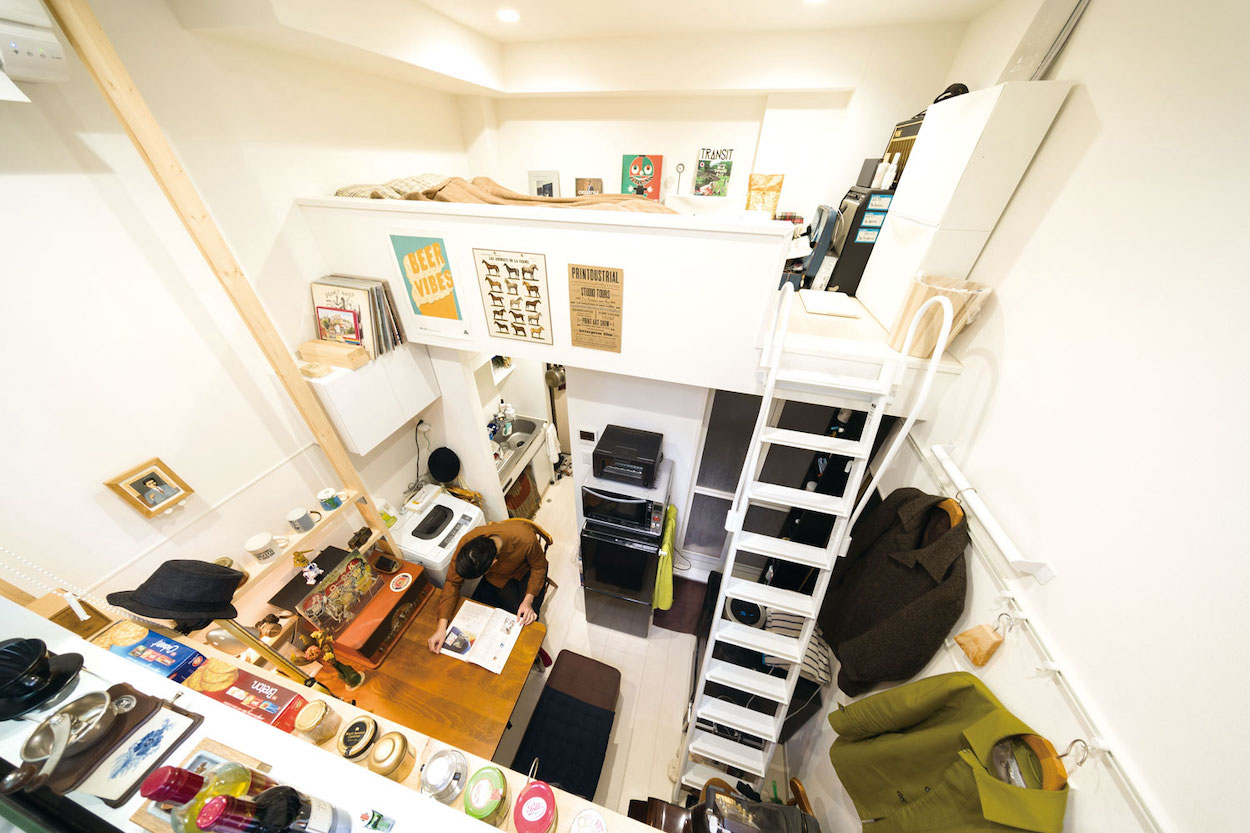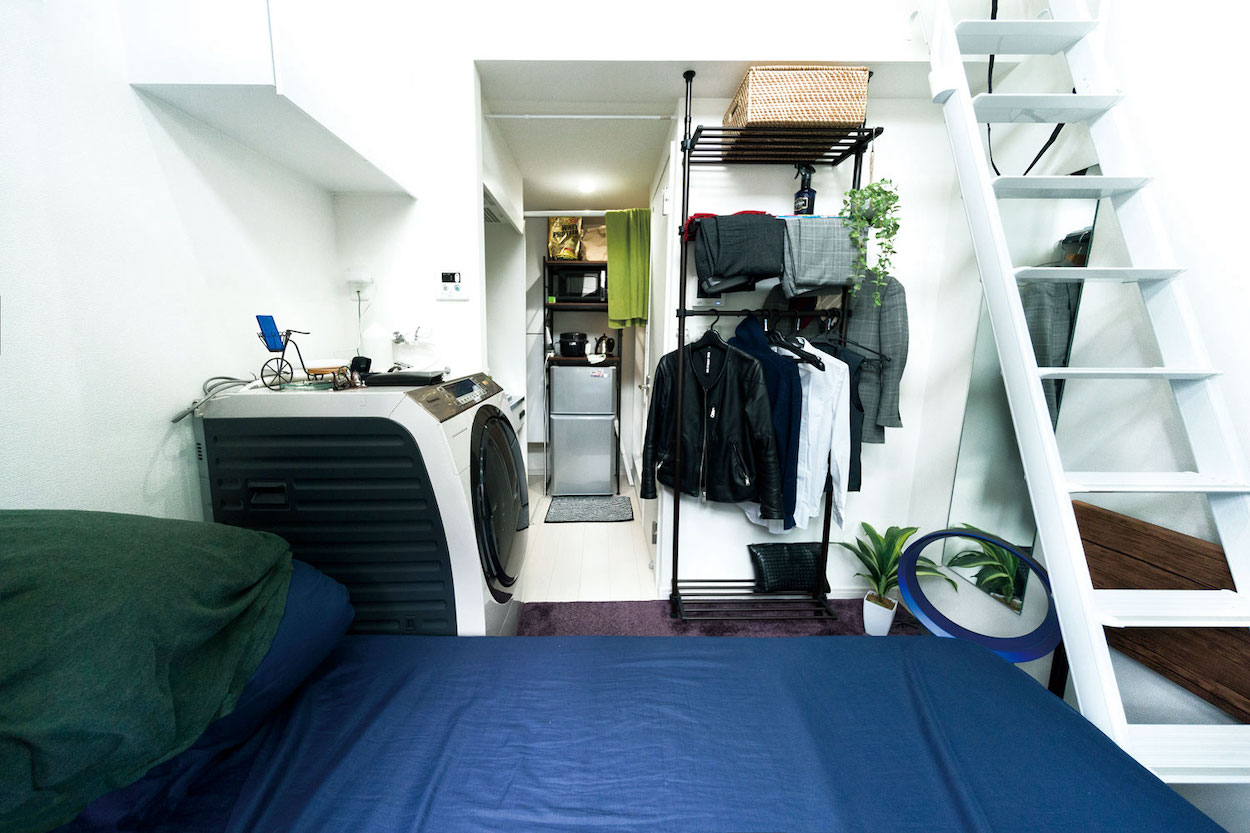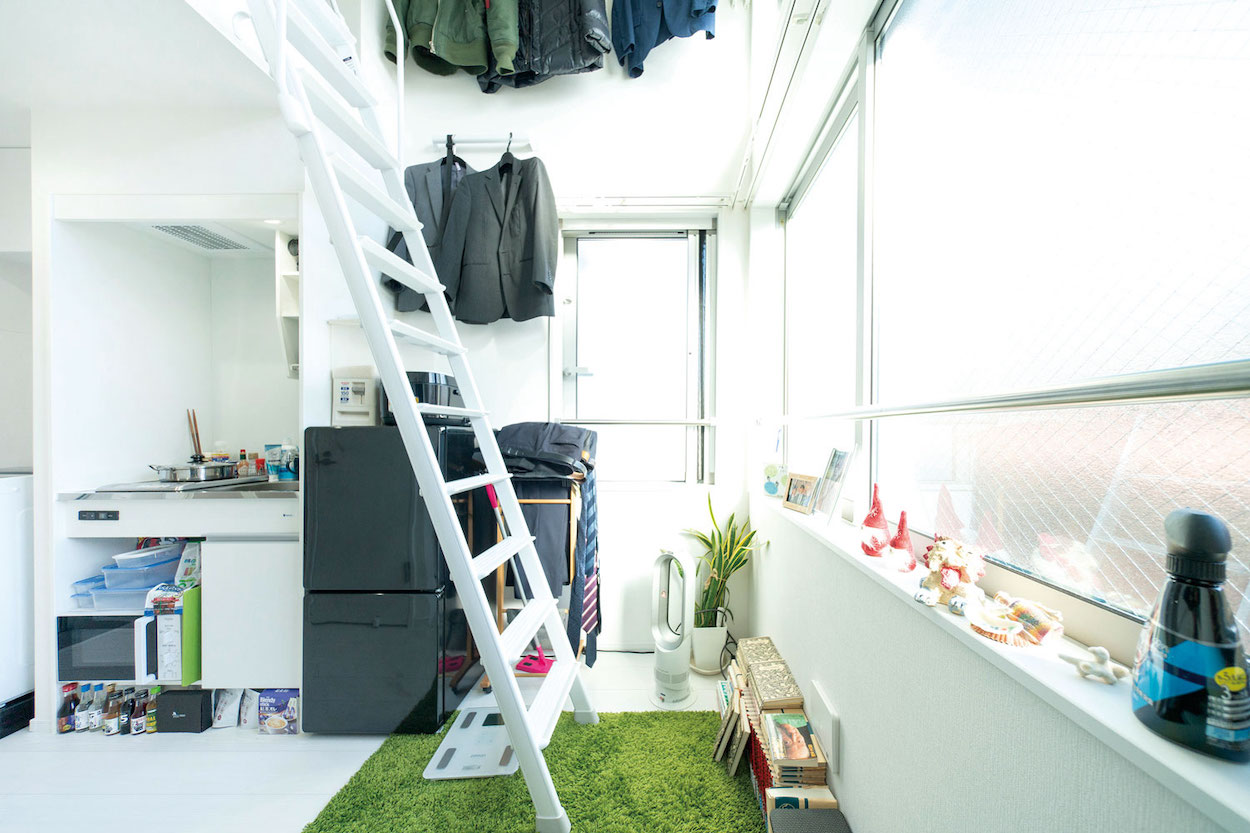In Japan, April is seen as a time of transition, when the new academic year kicks off and recent graduates enter the workforce. In the months leading up, many young people relocate closer to their new life—and to save money, many choose to move into micro-apartments. Over the past few years, real estate developer Spilytus has opened more than 100 shoebox apartment buildings around Tokyo under the Ququri brand. Clocking in at 95 square feet (or three tatami mats, a standard way of measuring room size in Japan), each no-frills unit has the bare necessities: a shower room, toilet room, kitchenette, and living room.
Studio apartments in Tokyo—a dense metropolis known for high property prices and compact housing—are usually double the size, but Ququri’s more than 1,500 tenants apparently don’t mind cupboard-like quarters. Spilytus strategically built the apartments close to trendy, transit-rich districts like Harajuku and Shibuya, where units rent for around $500 a month. This setup grants close proximity to favored neighborhoods on a budget, allowing them to save up for their next move. Many don’t spend much time at home—Japanese people often work long hours and hosting friends is uncommon.
Demand for Ququri’s micro-apartments has surged, even throughout the pandemic; Spilytus often needs to turn away applicants or place them on waiting lists due to a lack of vacancies. “I looked at regular apartments. They were bigger than this, but the rents were really high,” Reina Suzuki, a 30-year-old Ququri resident in western Tokyo, told The Guardian. “I’m going to save up for somewhere bigger. When I moved in, I felt tired a lot of the time, but I’ve got to quite like the place. I would even go as far as saying that I can relax here.”
Though they’ve drawn comparisons to office cubicles and residents report not having enough space to stretch out, they’ve also found pleasure in embracing the essentials. One moved closer to work and substituted time spent commuting with routine jogging, shedding 30 pounds; another didn’t feel the need to keep his mini-fridge. Trends around minimalism and decluttering (even as Marie Kondo embraces her mess) have also made the “just-the-basics” lifestyle seem more appealing, especially when there are social media incentives.
Micro-housing isn’t only having a moment in Tokyo. Prototypes are being tested in U.S. cities with chronically high rents and visible homeless problems. San Francisco is inching toward building a 70-unit complex of transitional housing in tiny homes. Los Angeles is leaning into the idea, recently opening North Hollywood’s Alexandria Park Tiny Home Village of 103 brightly colored single-occupancy cabins. The city is also making it easy to build ADUs with high-design options from the likes of Samara and Dwell. Micro-housing already feels like the norm in Manhattan, where you’re not even guaranteed a toilet.
As the rental market intensifies and more people are priced out of basic housing, maybe the U.S. could take a few notes from Japan. Though perhaps we could increase the square footage beyond the size of a prison cell.



